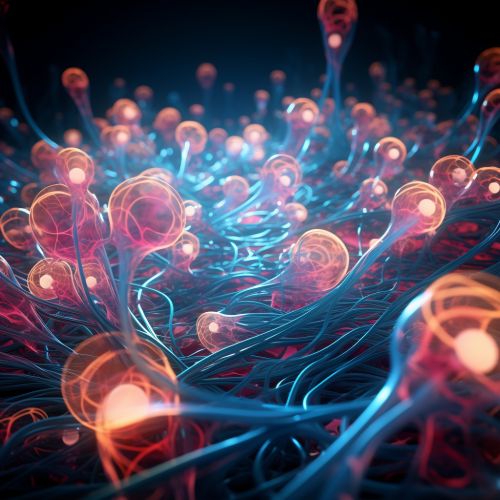Photoactivated Localization Microscopy
Introduction
Photoactivated localization microscopy (PALM) is a form of fluorescence microscopy that allows for super-resolution imaging of biological specimens. Unlike traditional microscopy techniques, PALM can achieve resolutions of up to 20 nanometers, making it possible to visualize the fine details of cellular structures.
Principles of PALM
PALM relies on the properties of certain fluorescent proteins that can be switched on and off with light. These proteins, known as photoactivatable or photoswitchable proteins, are genetically encoded into the specimen of interest. When illuminated with a specific wavelength of light, these proteins switch from a non-fluorescent state to a fluorescent state, emitting light that can be detected and localized with high precision.
The key to PALM's super-resolution capabilities lies in its ability to isolate individual fluorescent molecules within a dense population. By carefully controlling the intensity of the activation light, only a sparse subset of the fluorescent proteins are switched on at any given time. This ensures that the emitted light spots do not overlap, allowing for precise localization of each molecule.
Once the positions of the fluorescent molecules have been determined, the activation and imaging process is repeated thousands of times. The final super-resolution image is then constructed by superimposing the localized positions of all the fluorescent molecules.


Applications of PALM
Due to its ability to visualize cellular structures with unprecedented detail, PALM has found wide-ranging applications in the field of cell biology. It has been used to study the organization and dynamics of various cellular components, including proteins, lipids, and nucleic acids.
One of the most significant applications of PALM is in the study of protein-protein interactions. By using different types of photoactivatable proteins, multiple proteins of interest can be simultaneously imaged and their spatial relationships determined. This has provided valuable insights into the complex network of interactions that underpin cellular function.
PALM has also been used to investigate the structure and dynamics of the cytoskeleton, a complex network of protein filaments that provides structural support to the cell and plays a key role in cell division and migration. By visualizing individual filaments with super-resolution, researchers have been able to gain a deeper understanding of cytoskeletal organization and function.
Advantages and Limitations
Like all microscopy techniques, PALM has its advantages and limitations. One of its main advantages is its ability to achieve super-resolution imaging in living cells. This allows for the study of dynamic cellular processes in real time, providing a level of detail that is not possible with traditional microscopy techniques.
However, PALM also has its limitations. The need for genetically encoded photoactivatable proteins means that it can only be used in specimens that can be genetically manipulated. Furthermore, the imaging process is relatively slow due to the need for repeated activation and imaging cycles. This can limit its applicability in studying fast cellular processes.
Future Directions
Despite these limitations, the field of PALM is rapidly advancing, with new techniques and technologies being developed to overcome these challenges. For example, faster imaging methods are being developed to capture dynamic processes in real time. Similarly, new types of photoactivatable proteins are being engineered to expand the range of biological systems that can be studied with PALM.
As these advancements continue, it is likely that PALM will play an increasingly important role in our understanding of cellular structure and function.
